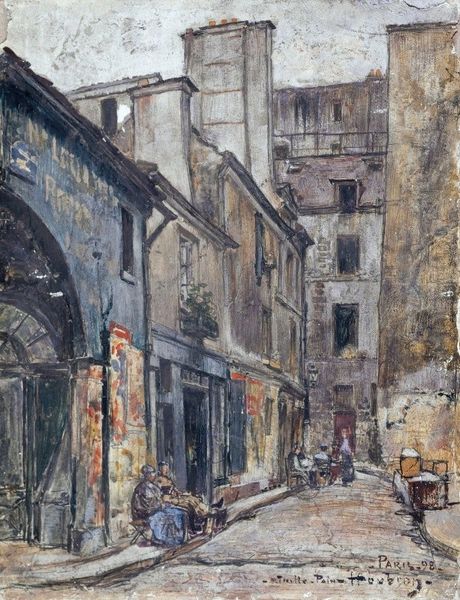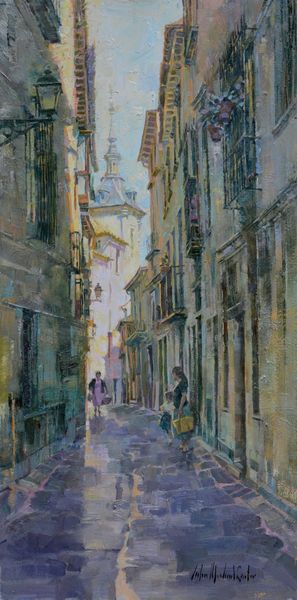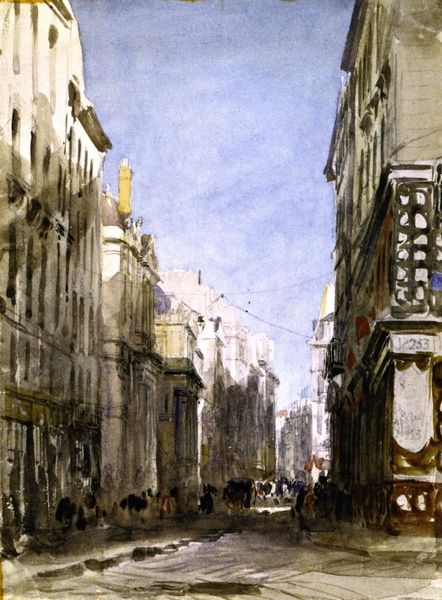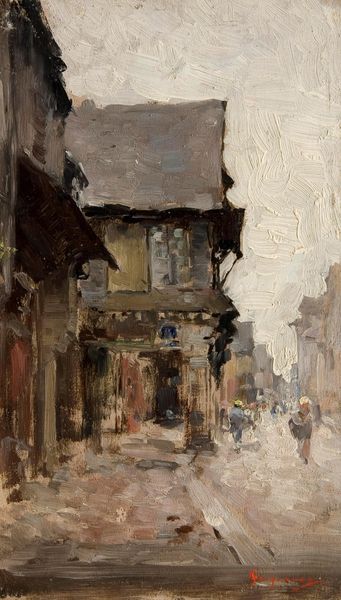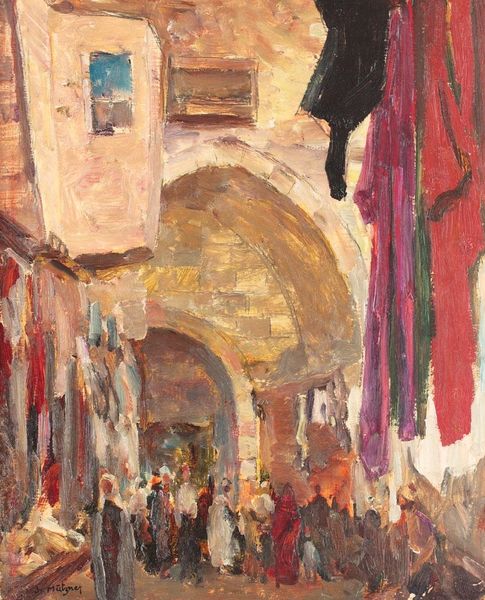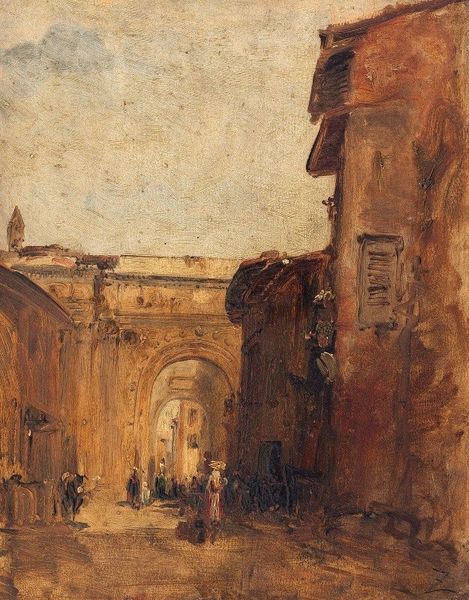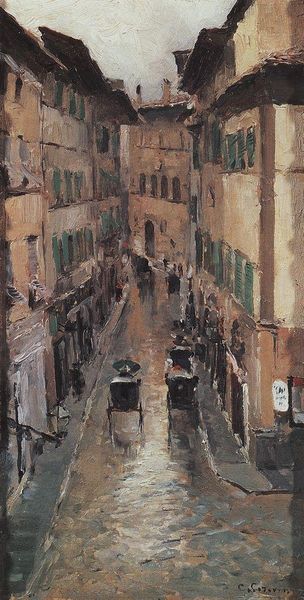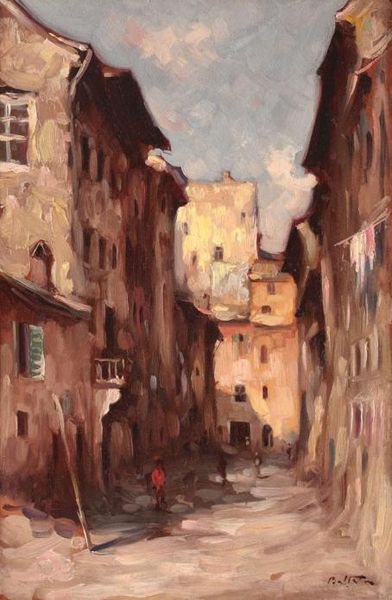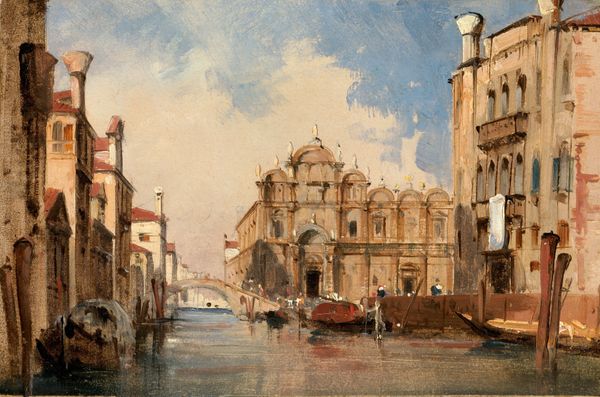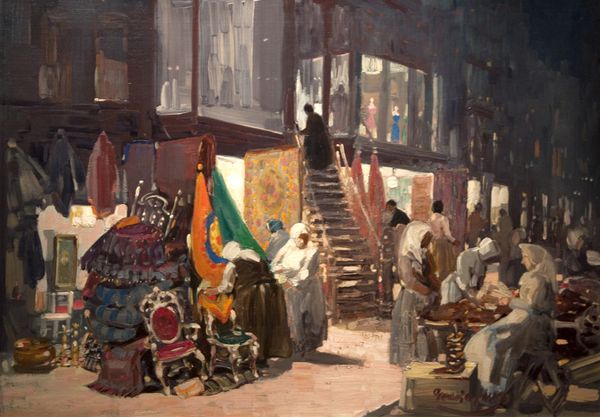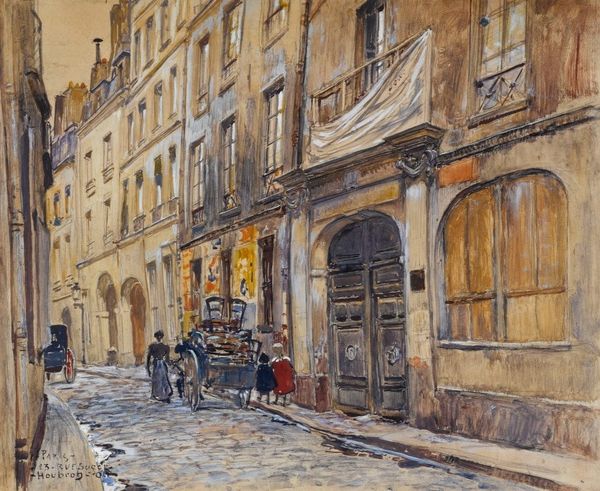
painting, oil-paint, impasto
#
urban landscape
#
painting
#
impressionism
#
street view
#
oil-paint
#
landscape
#
urban cityscape
#
impasto
#
city scape
#
cityscape
#
genre-painting
#
realism
Dimensions: 22.2 x 16 cm
Copyright: Public domain
Curator: The thick impasto and earthy tones of this painting pull me right into a bustling Neapolitan street scene. There's almost a tangible quality to the grit and the vibrant chaos. Editor: This is indeed Vincenzo Migliaro's "Arch of Sant'Eligio," an urban landscape rendered with oil paints that beautifully captures a slice of Neapolitan life, though the precise date of creation is unfortunately unknown. I’m immediately drawn to the social stratification implied in the image. Curator: Yes, exactly! Notice the light filtering through the arch, illuminating the working class, deeply contrasting with the clock tower towering above; it suggests temporal and socio-economic disparities inherent to urban experience, an intersection of daily life regulated under institutional power, echoing Lefebvre's "Rhythmanalysis." The way Migliaro paints the figures, they appear not just as individuals but also representatives of collective labor. Editor: I agree that the clock underscores regulated time but consider the marketplace and its social functions. Migliaro depicts a thriving informal economy vital to urban society, revealing how street vending was a common occupation, especially for women and the working class, marking their presence and resilience within the public sphere and, through this, also implicitly criticising limited or inexistent public help. The image is, beyond aesthetics, a crucial historical document. Curator: And in its documenting lies a potent aesthetic choice. I love how he’s used impressionistic techniques to suggest movement. It is a genre-painting, after all. The blur creates a very intimate connection to the scene for the viewer as if we were part of the flow of life in Naples ourselves, not distant observers. Does it make one question our role when regarding marginalise communities. Editor: Certainly. And speaking of flow, one has to remember how art like this gained legitimacy. Paintings depicting everyday life gained increasing popularity within nineteenth-century art markets; scenes of the urban working class had growing consumer value. The narrative function also cannot be overlooked, given the painting now resides in a private collection and this context shaped the politics of display and impacted public access and perceptions. Curator: Absolutely. So, what's left isn’t just the surface aesthetics but questions about power, market influences, and representation that ripple throughout the frame and far beyond it. Editor: Precisely, it urges a deeper engagement than merely noting its picturesque elements, compelling critical investigation.
Comments
No comments
Be the first to comment and join the conversation on the ultimate creative platform.
